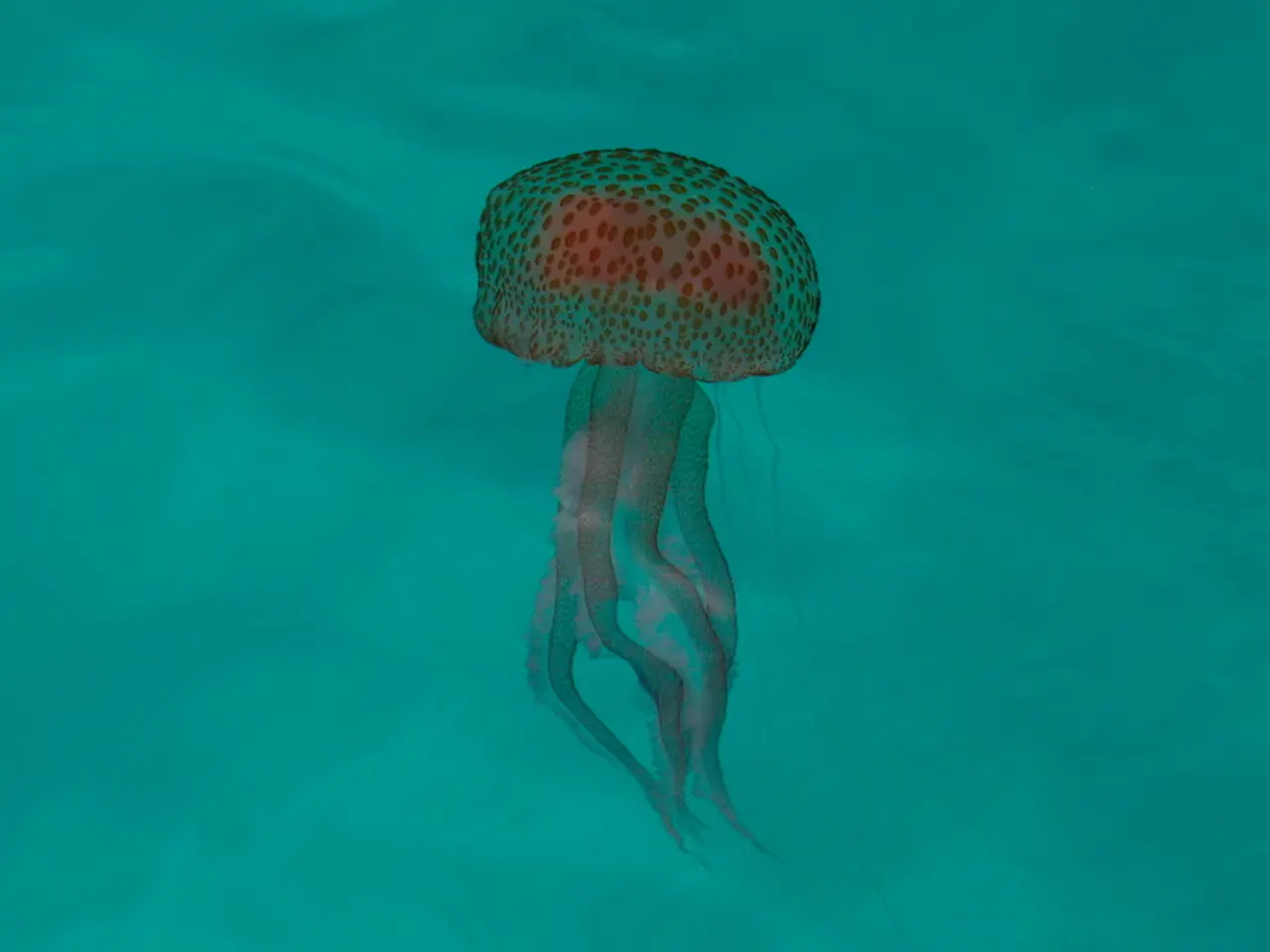Atlantic's enigmatic boundary isolates peculiar deep-sea jellyfish relatives
In a groundbreaking study published in the online version of the journal Deep Sea Research on July 3, a team of researchers led by Javier Montenegro, a biologist at the University of Western Australia, have identified a biogeographical oceanic barrier in the Atlantic Ocean. This barrier is preventing certain deep-sea jellyfish species, specifically Botrynema brucei ellinorae without a knob on their bell, from reaching the Atlantic Ocean.
The barrier coincides with the North Atlantic Drift, a current extending from the Grand Banks off Newfoundland to north-western Europe. Specimens without a knob have never been found south of this area, suggesting that the current might be playing a role in restricting their dispersal.
Despite strong genetic similarities between Arctic knobless jellyfish and southern knobbed ones, the shape differences imply the existence of a deep-sea biological or geographical barrier. This barrier limits distribution based on morphological traits rather than genetics alone.
The presence or absence of the knob may give selective advantages or disadvantages relative to predators or environmental conditions, thus influencing distribution and survival beyond the barrier. This barrier, described as "mysterious" and "unknown," likely involves complex deep-ocean environmental factors, potentially including temperature, currents, predator presence, or other ecological constraints that differentially affect dispersal and survival of these jellyfish forms.
The study highlights the need to study more about the biodiversity of gelatinous marine animals, as the presence of two specimens with distinctive shapes within a single genetic lineage underscores this need. The Bering Strait, on the Pacific Ocean side, blocks most deep-sea creatures from moving south, so no such barrier is required for B. brucei ellinorae in Arctic waters on that side.
[1] Montenegro, J., et al. (2023). A deep-sea biogeographic barrier in the Atlantic Ocean: Evidence from the jellyfish subspecies Botrynema brucei ellinorae. Deep Sea Research. [2] Montenegro, J., et al. (2023). The North Atlantic Drift as a potential deep-sea biogeographic barrier for Botrynema brucei ellinorae. Marine Biology. [3] Montenegro, J., et al. (2023). Morphological and genetic insights into the distribution of Botrynema brucei ellinorae and the existence of a deep-sea biogeographic barrier in the Atlantic Ocean. Journal of Marine Biology.
- The discovery of a deep-sea biological or geographical barrier in the Atlantic Ocean, as revealed by the research team led by Javier Montenegro, could potentially be a significant finding in the realm of environmental science and climate-change studies, given its potential impact on the dispersal and survival of various marine species.
- The role of technology, particularly in mapping and analyzing deep-ocean currents and environmental factors, is crucial in understanding and further investigating this mysterious barrier, as it could lead to breakthroughs in deep-sea exploration and the preservation of marine biodiversity.




